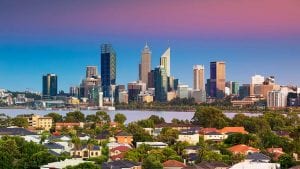The Republic of Ireland is set to say goodbye to coal, after the state-owned Electricity Supply Board announced it would transform its last remaining coal generation, the 915MW Moneypoint facility, into a green energy hub, including a 1.4GW floating offshore wind farm.
The closure of the Moneypoint coal-fired power station is in line with the Ireland Government’s ambition of reaching net zero emissions by 2050. It was already scheduled “no later than 2025”.
The Moneypoint site in County Clare will now be transformed into a green energy hub, and work has already begun on a new €50m Sustainable System Support facility which will include the largest Synchronous Compensator in the world, which will provide a range of electrical services to the country’s electricity grid which would previously have been supplied by thermal fired power stations.
The new Sustainable System Support will also enable the incorporation of higher volumes of renewable energy sources on the Irish grid.
Moving forward, ESB will also build the Moneypoint Floating offshore wind farm, a 1.4GW project to be developed off the coast of Counties Clare and Kerry in two phases in partnership with Norwegian power company Equinor.
ESB also hopes that Moneypoint will become a centre for the construction and assembly of floating wind turbines with the development of a wind turbine construction hub, using the site’s existing deep-water port that could also be an ideal staging ground for other projects in the region.
The development of a wind turbine construction hub will generate a significant number of direct jobs in Ireland’s Mid-West region, and in the longer term will support wider plans of the Shannon Foynes port, and help to make the Shannon Estuary a focal point for the offshore wind industry in Europe.
Finally, ESB’s plans for Moneypoint also include a green hydrogen production, storage, and generation facility, to be built towards the tail end of the decade.
“ESB’s Brighter Future strategy is anchored in our ambition to lead the transition to a low-carbon energy future, powered by clean electricity,” said Pat O’Doherty, ESB Chief Executive.
“The transformation of Moneypoint into a green energy hub will be a major step in achieving this and will bring huge benefits to the Mid-West and beyond.
“We have long signaled our intention to cease burning coal at Moneypoint. Today we are unveiling plans for a reimagined Moneypoint, which will not only create hundreds of jobs, but will also help Ireland to meet its climate targets and maintain secure supplies of electricity into the future.”
Built in the 1980s, Moneypoint once produced 25% of Ireland’s electricity requirements, helping to reduce the country’s dependence on imported oil.
Since then, however, with the increase in natural gas and renewables in the national energy mix, coal’s importance has dropped considerably.
According to the Sustainable Energy Authority of Ireland (SEIA), in 2018, coal and peat accounted for 40% of the country’s carbon emissions from electricity generation, but only accounted for 14% of electricity generated, with each providing similar levels of generation to the grid.











